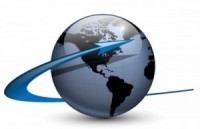 I admit I am a huge proponent of Evernote. It is a powerful tool that can boost your productivity. The uses are about as endless as your imagination. I use it to make check lists, store Excel files, clip information from the web, save scanned documents, keep track of ideas, store pictures, and archive emails.
I admit I am a huge proponent of Evernote. It is a powerful tool that can boost your productivity. The uses are about as endless as your imagination. I use it to make check lists, store Excel files, clip information from the web, save scanned documents, keep track of ideas, store pictures, and archive emails.
Think of Evernote as a virtual file cabinet having hundreds of drawers with files in the drawers and sticky notes or tabs in the files to help you find information in the file. Evernote is your digital filling cabinet.
To take advantage of all Evernote features, I recommend the Premium upgrade (Cost is $45 annually). When you begin using Evernote, become comfortable with how it is arranged, how to create notebooks and how to use tags. The best resource that I have found to use Evernote to its full potential is Brent Kelly’s Evernote Essentials (Cost is about $13).
Let’s get started with some Evernote basics.
1) How Evernote is arranged (Notes, Notebooks, Stacks, and Tag
a. Notes
Everything stored in Evernote is stored as a note. Notes can be anything: web clippings, pictures, text, audio files, video clips or emails. Just about anything digital can be stored in a note. In the note window, you can name the note, add tags, move to a notebook, and share notes.
b. Notebooks
Notebooks are where all of your notes live. They are your files in your digital filing cabinet. The first notebook is auto created by Evernote using your log in name and all notes will be stored here initially. The default notebook name can be changed and additional notebooks can be created to organize your notes.
c. Stacks
Creating a stack is a way to group notebooks together. Stacks are virtual file drawers that have two or more notebooks stored in them. As an example, I like roasting green coffee beans. So in Evernote, I have a notebook for coffee info that has notes for different coffee companies and coffees that I order. Also, I have a notebook on coffee equipment. I have these two notebooks in a stack named Coffee.
d. Tags
Tags give us greater flexibility to group our notes in ways other than notebooks. It is a powerful way to add identifiers to your notes or notebooks. Multiple tags can be used in each note to further describe the content. To stay with my example of coffee, in my notebook named “coffee”, I have information on coffee companies, coffee varieties, and description of each variety. I could have tags for “Bold “or “Complex” to describe a note. This will also aid in searching the notes. More on searches later.






